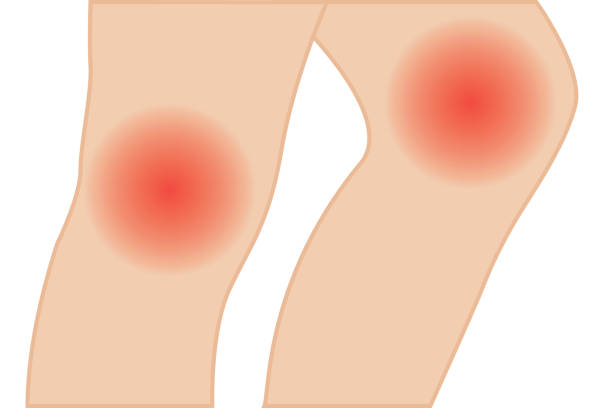



Wrist Pain
Wrist pain has a substantial impact on daily life, as your wrists are actively engaged from the moment you wake up until bedtime, enduring thousands of movements at home and work. Regrettably, the repetitive use of wrists can potentially result in overuse injuries and unpleasant symptoms.
Regardless of its origins—be it injury, overuse, or specific medical conditions—effectively managing wrist pain is essential for relieving discomfort and facilitating recovery. Maintaining functionality is paramount, making it imperative to address wrist pain proactively. An orthopedic surgeon is adept at devising personalized treatment plans to efficiently alleviate the pain.
This comprehensive guide offers valuable insights and pragmatic strategies for the successful management of wrist pain, allowing individuals to reclaim optimal functionality.
Cause
Wrist pain can stem from various causes, and a comprehensive understanding of these factors is crucial for effective management. A frequent culprit is a strain, wherein the muscles or tendons in the wrist undergo stretching or tearing. Carpal tunnel syndrome presents another prevalent cause, characterized by the compression or irritation of the median nerve as it passes through the carpal tunnel in the wrist. Additionally, tendinitis, marked by the inflammation of tendons connecting muscles to bones, can contribute to the pain. In certain instances, fractures or dislocations may also be responsible for causing discomfort in the wrist.
Proven techniques and methods for managing wrist pain include:
1. REST – Rest your wrist for healing. Avoid activities that worsen pain, like repetitive movements or heavy lifting. Cut down typing and take breaks from tasks like cooking. Modify daily routines to ease wrist strain and manage pain.
2. IMMOBILIZATION – Use assistive devices if needed. A wrist splint stabilizes the wrist during activity, easing pain. Wear a wrist brace at night for proper alignment. These devices reduce strain and support the wrist.
3. PAIN MEDICATION – You can also try over-the-counter NSAIDs. Follow dosage instructions for one week. If pain continues, consult an orthopedic doctor for evaluation and personalized treatment.
4. COLD THERAPHY – Temporarily alleviate wrist pain by applying an ice pack or ice wrapped in cloth to the affected area for approximately 20 minutes at a time. This can provide a soothing effect and help reduce pain and inflammation in the wrist.
5. HEAT THERAPHY -For arthritis-related wrist pain, try heat therapy. Apply a warm compress or use heat packs to increase blood flow and relax muscles. Consult a doctor before using heat, especially for acute injuries, to avoid worsening swelling.
6. HAND THERAPHY – Therapists prescribe hand exercises for wrist issues. These include stretching, moving, and strengthening to improve wrist strength and flexibility. Do these exercises with a therapist to ensure they’re done correctly and help your wrists stay healthy
7. ERGONOMIC MODIFICATIONS – Improving how you work can help wrist pain. Keep wrists in line when typing or using a computer. Use ergonomic tools like chairs and keyboards. Take breaks to stretch if you work at a desk to ease wrist stress.
8. ALTERNATIVE THERAPIES – Several alternative therapies may complement conventional approaches in managing the pain. These include acupuncture, massage therapy, chiropractic care, and transcutaneous electrical nerve stimulation (TENS). A lot of individuals have experienced wrist pain relief from alternative therapies. Make sure to choose a provider trained and licensed to provide the treatment you are considering.
9. HAND SURGERY – Sometimes, if the pain is too much, it needs surgery. Skilled doctors can do different procedures, like fixing tissue or bones, to ease long-term pain. New techniques mean less pain and faster recovery for most people having wrist surgery.
When To Seek Medical Attention?
While self-care measures can effectively relieve mild to moderate pain, certain situations warrant medical attention. If pain persists, worsens, or presents with severe swelling, deformity, or loss of function, consulting with an orthopedic surgeon is crucial. They can conduct a comprehensive evaluation, recommend diagnostic tests if necessary, and guide you on appropriate treatment methods.
The pain typically requires a comprehensive approach, and addressing underlying causes is essential for lasting relief. It’s important to be proactive in seeking medical advice and making necessary lifestyle changes to manage and alleviate wrist pain effectively.
Need Brace For Your Wrists?
At Daphco Medical Equipment we offer various types of braces including for the wrist. Our MEDICARE covered braces can help alleviate chronic pains, provide support and stabilization. Check our store to see our affordable braces or if you’re a Medicare covered patient, fill out this form so that we can give you further information on how to get a brace covered by your insurance.
Search Articles
Latest Articles
28th Feb, 24
23rd Feb, 24
20th Feb, 24
15th Feb, 24
13th Feb, 24



 888-616-4156
888-616-4156 


 28th Feb, 24
28th Feb, 24 


